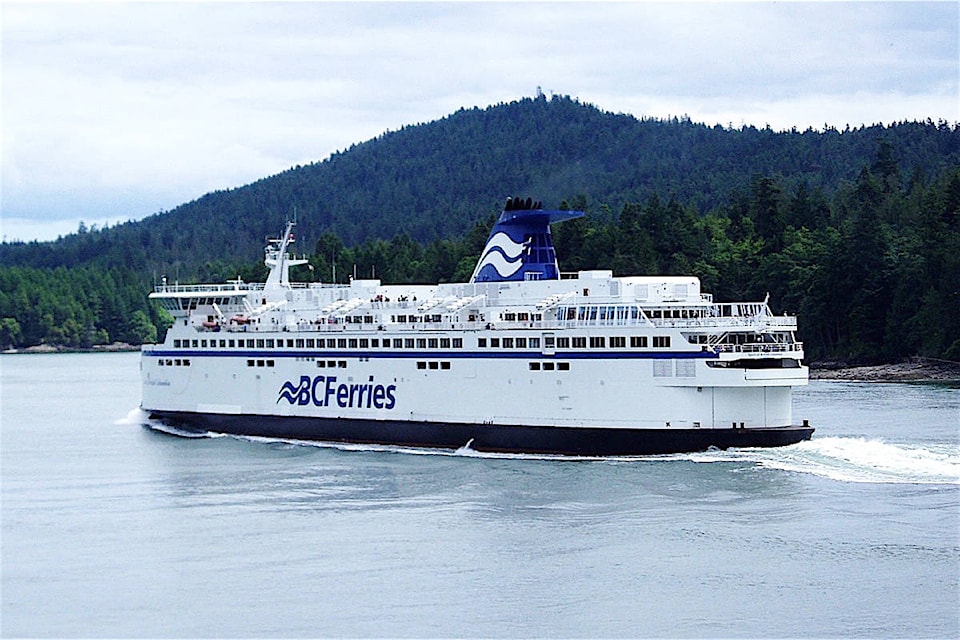One of BC Ferries’ two largest vessels returns to service on the Tsawwassen to Swartz Bay route, following a conversion to make the ship run on liquefied natural gas.
The Spirit of British Columbia will be back, making the run between the Lower Mainland and Greater Victoria, as of tomorrow (June 6), starting out of Tsawwassen at 7 a.m. and ending the day at 9 p.m. from Swartz Bay. Its sister ship the Spirit of Vancouver Island, which also makes the same journey, will go through its own conversion to natural gas later this fall and will return to service in 2019.
The two ferries are the first vessels in the BC Ferries fleet to undergo a conversion from marine diesel fuel to LNG. The newer, Salish Class ships introduced last year were purpose-built to run on natural gas.
RELATED: LNG ferry refits to be done in Poland.
Deborah Marshall, BC Ferries media spokesperson, says the Spirit class vessels will run on both LNG and diesel, with the intent to operate on gas most of the time. The Spirit of British Columbia started its refit last September after sailing to Poland, where the work was done.
Marshall added its conversion comes with a few other upgrades. The vessel has improved its passenger amenities — including a new coffee bar on the upper passenger deck and doubling the size of their gift shop. She added charging stations have been added as well, since the vessel was originally put in service in the 1990s — when there was less call for them.
The newly-converted ferry has been back in B.C. waters for about a month, she continued, as crews were trained on the new systems, safety procedures and operations. Fuelling of the ship will take place via FortisBC. Like their conventional vessels, Marshall said they will be fuelled at night. These are the first passenger vessels of their kind to be fuelled on an open vehicle deck, she added. SeaSpan runs a freight vessel that is fuelled by an LNG truck the same way.
It’s being done this way, Marshall explained, because building bunkering facilities at their terminals — or using an LNG fuelling vessel — is cost-prohibitive.
The conversion to LNG is expected to save BC Ferries millions in fuel costs. Marshall said LNG is 40 to 50 per cent cheaper than marine diesel fuel. Still, she said the majority of their fleet runs on diesel.
RELATED: BC Ferries freezes plans to nix fuel rebates.
Using LNG is also expected to reduce emissions from the converted vessels. Marshall said early emissions testing looks good and BC Ferries anticipates, once the Spirit of Vancouver Island is converted, to reduce CO2 emissions by 12,500 tonnes — or the equivalent of 2,500 vehicles on the road.
RELATED: Have your say about the new Swartz Bay ferry terminal.
Once the Spirit of Vancouver Island has completed its refit this fall, Marshall said five of the fleet’s 36 vessels will run on a dual fuel system. In the meantime, they are also investing in hybrid battery-diesel engines in new, 47-vehicle ferries expected to be constructed by 2020.
editor@peninsulanewsreview.com
Like us on Facebook and follow us on Twitter
